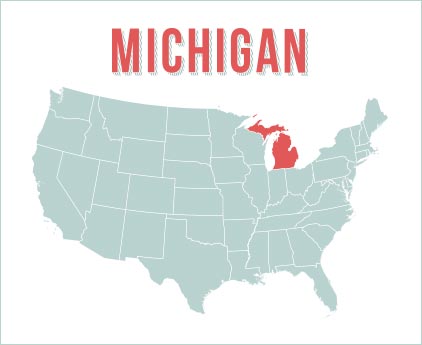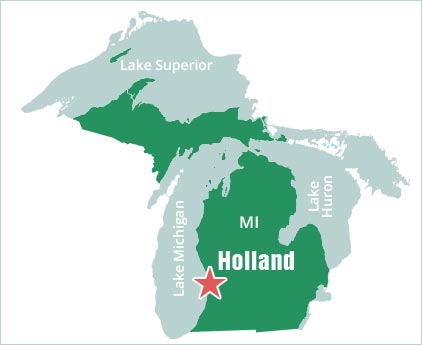Hedges & Shrubs from K. van Bourgondien
Grown in prime Michigan soil, K. van Bourgondien's Ready, Set, Hedge® selections are some of the best-performing plants you can find. Thanks to nearby Lake Michigan, our hedges are grown in nutrient-rich sandy loam and nurtured right up until harvest, so their root systems are strong and healthy and ready for optimal performance. Our hedges are also shipped right to your door for your convenience.How to Grow Hedges
First, look for a hedge variety appropriate to your climate if you live in an area with more extreme weather conditions. Those further north will want to look for cold-hardy hedges, and those in hotter, dryer conditions will want to find plants that can tolerate heat and possible drought. Once you have selected the hedge variety you want and have vetted that it's appropriate for your region, you're ready to prepare it for planting.When to Plant Hedges
Hedges grow best when planted in cooler months. Cooler air and soil temperatures help to reduce the stress put on the plant, allowing them to better take root. In northern areas, planting during fall is optimal. Early winter may be best suited for southern areas. Ideally, you want to pick a time that is cool but far from freezing.How to Plant Hedges
To begin, you'll want to prep your soil. If your soil is lacking in nutrients (tests are available to gauge this), you'll want to add in compost to enhance soil nutrition and help with water retention and drainage.Next, you'll need to find the right location for your hedges. Be sure that the space you intend to plant in allows for enough room to accommodate the advised width and height your hedge will grow to.
From there, you will need to dig a trench roughly 12 inches deep and 20 inches wide, though a more specific size may be included with your hedge according to its root ball. Plant the hedge and gently cover the roots with soil. Be careful not to pat the soil down so tightly that the roots cannot breathe.
Lastly, water your hedge well after planting. Surround the base of the plant with one or two inches of mulch to protect the roots and retain water. Fertilize hedges with a slow-release fertilizer to help them take off.
Pruning vs. Trimming Hedges
Though the terms pruning and trimming are often used interchangeably, there is actually a difference. To prune a hedge means to cut away dead or diseased parts of the plant. To trim means to cut back the hedge or cut it into a desired shape.Trimming Hedges
It's best to trim hedges when they're dormant, which is fall to early spring. It's critical to not prune these plants when the weather is too cold or too hot. Prune them before freezing temperatures hit, and be sure not to prune during hot, dry weather. To avoid leaf burn, choose a cool, overcast day.Hedges can be trimmed with electric or hand-held pruners. The tool you use should be sharp to avoid inflicting unnecessary stress on the plant. Eyeball the size and shape you want your hedge to be, and take your time in trimming off the tips. To help sunlight reach the base of your plant, cut the top portion a little shorter than the bottom.
Pruning Hedges
When to prune your hedges largely depends on what type of hedge you have. Winter is often the best time for dormant pruning, with six to 10 weeks before the average last frost in your area. It is important, however, to avoid pruning shrubs in winter that will bloom in spring. You'll cut off flower buds. The best time to prune these hedges is shortly after they finish blooming.For diseased plants, cut the affected area away as soon as you spot it.
As with trimming, use a sharp tool to avoid stressing the plant. Snip away any dead, loose, or infected plant material, careful not to injure the healthy parts of the plant. Dead plant material can be used for composting.
K. van Bourgondien's Ready, Set, Hedge® plants are grown in the rich, healthy soil of Holland, Michigan
For decades growers have boasted over Michigan soil, and for good reason. The rare, nutrient rich sandy loam just inland from Lake Michigan, produces some of the best performing trees and shrubs you can find.


More reasons to try Ready, Set, Hedge®
Money-saving multi-packs.
When planning a proper hedge, consider the space you want to fill and the spread of your chosen shrub variety. Usually, multiple plants are required. We created multi-plant bundles with this in mind—the more you buy, the more you save.
Shipped right to your door.
No need to borrow a truck or put down a tarp in the back of your SUV. No spilled dirt when the pots in the back inevitably tip over on the ride home. Our healthy shrubs ship right to your door at the perfect time for planting in your area.

















